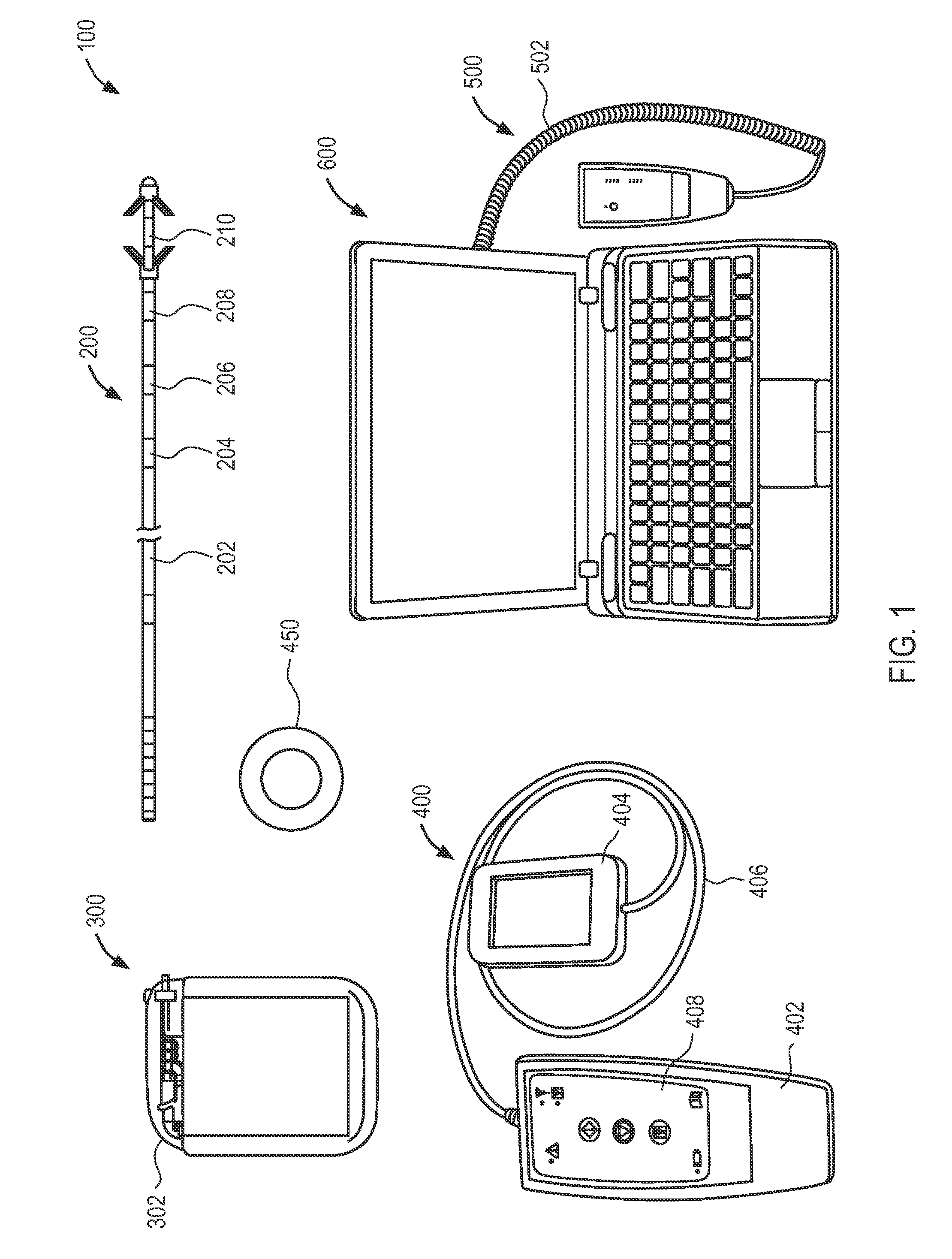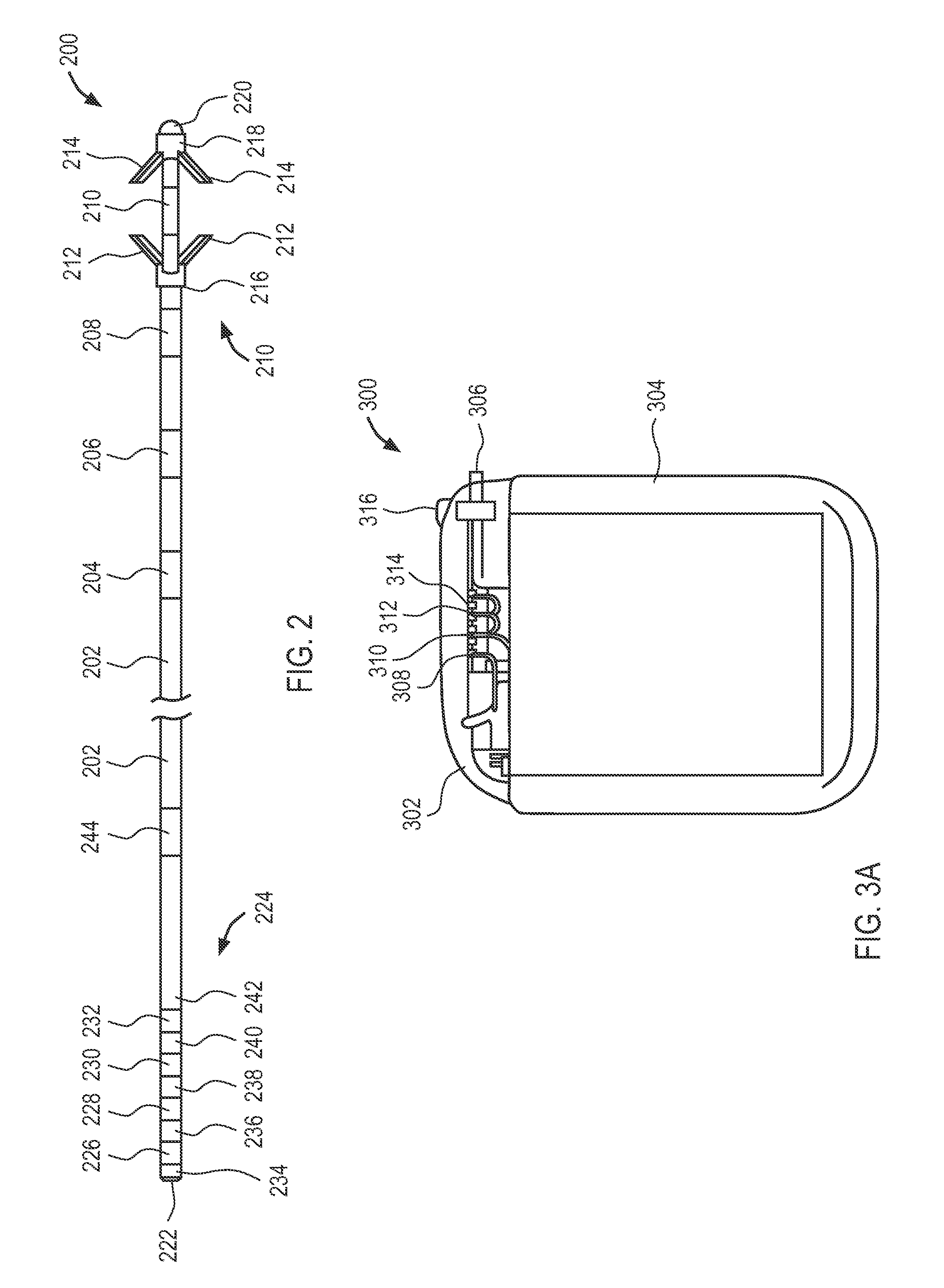Systems and methods for restoring muscle function to the lumbar spine
a lumbar spine and muscle technology, applied in the field of neuromuscular electrical stimulation, can solve the problems of spinal stabilization system dysfunction, back pain, corrupt signal transduction, etc., and achieve the effect of restoring muscle function of the lumbar spine and reducing back pain
- Summary
- Abstract
- Description
- Claims
- Application Information
AI Technical Summary
Benefits of technology
Problems solved by technology
Method used
Image
Examples
Embodiment Construction
[0050]The neuromuscular stimulation system of the present invention comprises implantable devices for facilitating electrical stimulation to tissue within a patient's back and external devices for wirelessly communicating programming data and stimulation commands to the implantable devices. The devices disclosed herein may be utilized to stimulate tissue associated with local segmental control of the lumbar spine in accordance with the programming data to rehabilitate the tissue over time. In accordance with the principles of the present invention, the stimulator system may be optimized for use in treating back pain of the lumbar spine.
[0051]Referring to FIG. 1, an overview of an exemplary stimulator system constructed in accordance with the principles of the present invention is provided. In FIG. 1, components of the system are not depicted to scale on either a relative or absolute basis. Stimulator system 100 includes electrode lead 200, implantable pulse generator (IPG) 300, acti...
PUM
 Login to View More
Login to View More Abstract
Description
Claims
Application Information
 Login to View More
Login to View More - R&D
- Intellectual Property
- Life Sciences
- Materials
- Tech Scout
- Unparalleled Data Quality
- Higher Quality Content
- 60% Fewer Hallucinations
Browse by: Latest US Patents, China's latest patents, Technical Efficacy Thesaurus, Application Domain, Technology Topic, Popular Technical Reports.
© 2025 PatSnap. All rights reserved.Legal|Privacy policy|Modern Slavery Act Transparency Statement|Sitemap|About US| Contact US: help@patsnap.com



